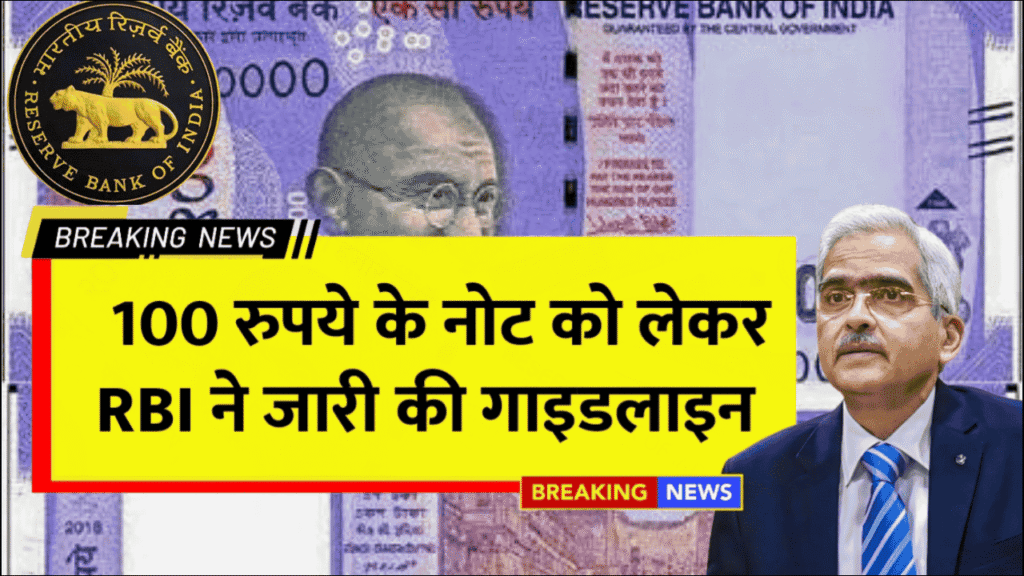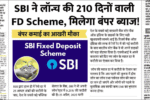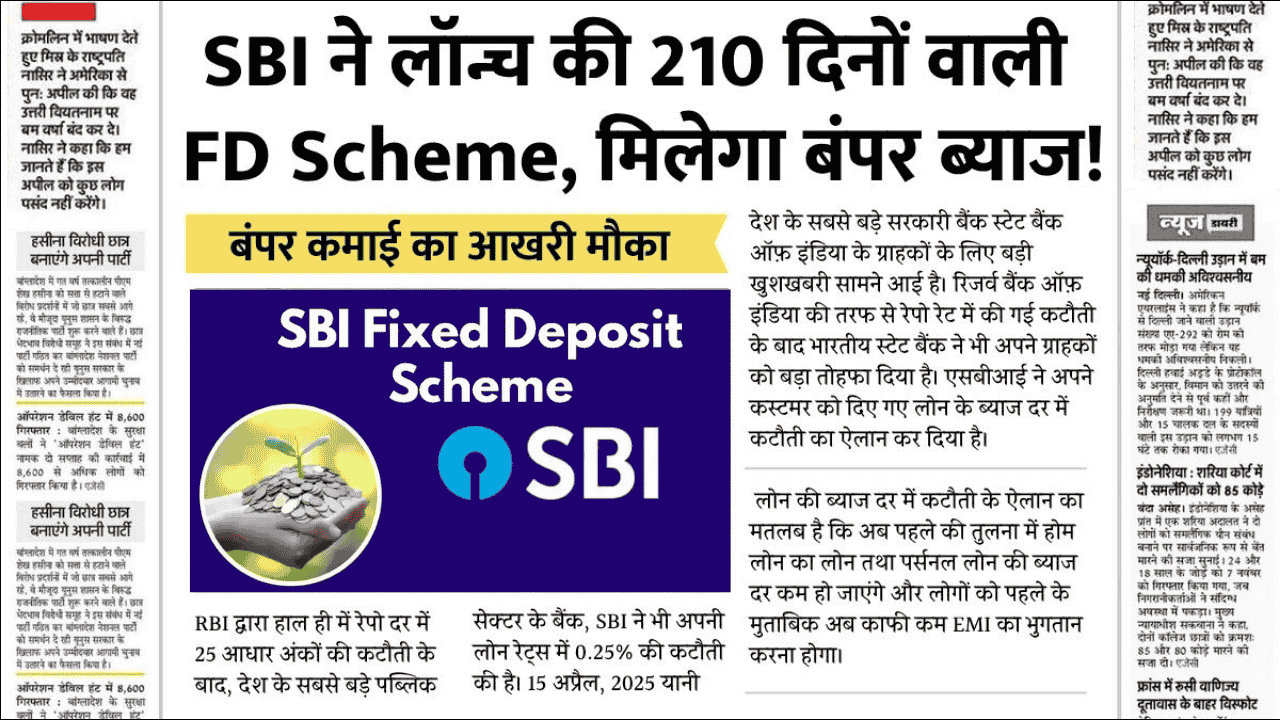
The Reserve Bank of India (RBI) has released comprehensive guidelines to help citizens identify genuine ₹100 notes amid growing concerns about counterfeit currency circulation in the Indian economy. The ₹100 denomination represents the most widely used currency note in daily transactions across the country.
This initiative comes in response to increasing reports of fake ₹100 notes appearing in various markets, banks, and even ATMs, causing financial losses to unsuspecting citizens and businesses.
The central bank’s new guidelines provide detailed methods for distinguishing authentic notes from sophisticated counterfeits that have become increasingly prevalent in recent years.
Understanding these identification techniques is crucial for every citizen, from shopkeepers to consumers, to protect themselves from economic fraud and maintain confidence in the currency system.
Rising Counterfeit Currency Concerns
The circulation of fake ₹100 notes has reached alarming levels, prompting RBI to take decisive action to educate the public about authentic currency features. These counterfeit notes have been detected in various commercial establishments and financial institutions.
The problem extends beyond individual losses, as counterfeit currency undermines the stability of the entire economic system and reduces public confidence in legal tender.
RBI has invested significant resources in developing advanced security features for genuine notes, but public awareness remains the most effective defense against counterfeit currency.
The central bank previously issued similar guidelines for ₹500 and ₹2000 notes, and now extends this crucial information to the most commonly used ₹100 denomination.
Security Thread Identification Method
The most reliable method for identifying genuine ₹100 notes involves examining the security thread visible when held against light. This thread appears as a continuous straight line embedded within the note’s paper structure.
The security thread contains repeated text showing “भारत” (Bharat), “100,” and “RBI” in a consistent sequence that cannot be accurately replicated in counterfeit notes.
In authentic notes, this security thread appears perfectly straight and clear, while fake notes often display crooked, blurred, or inconsistent thread patterns.
The thread’s width and color remain uniform throughout its length in genuine notes, making this feature one of the most difficult for counterfeiters to reproduce accurately.
Authentication Features Comparison
| Security Feature | Genuine Note Characteristics | Counterfeit Note Signs |
|---|---|---|
| Security Thread | Straight, clear, uniform text | Crooked, blurred, inconsistent |
| Latent Image | Clear “100” at specific angle | Absent or poorly defined |
| Raised Print | Tactile texture on key elements | Flat or minimal texture |
| Watermark | Clear Gandhi portrait and “100” | Blurred or missing elements |
| UV Fluorescence | Specific patterns under UV light | Incorrect or missing patterns |
Latent Image Technology
Genuine ₹100 notes incorporate sophisticated latent image technology that reveals the number “100” when viewed at specific horizontal angles. This security feature becomes visible only when the note is positioned correctly relative to the viewer’s eyes.
The latent image appears sharp and well-defined in authentic notes, while counterfeit versions either lack this feature entirely or display poorly executed imitations.
This technology requires advanced printing techniques that are extremely difficult for counterfeiters to replicate accurately, making it a reliable authentication method.
The image becomes invisible when viewed straight-on but clearly appears when the viewing angle changes, demonstrating the sophisticated security measures embedded in genuine currency.
Tactile Security Features
Authentic ₹100 notes feature raised printing (intaglio printing) that can be felt through touch, particularly on Mahatma Gandhi’s portrait, the RBI guarantee clause, and the Ashoka Pillar emblem.
This raised texture is created through specialized printing processes that produce a distinct tactile sensation when touched, especially beneficial for visually impaired individuals.
Counterfeit notes typically lack this raised texture or feature only minimal elevation that doesn’t match the pronounced feel of genuine currency.
The triangular symbol on the left edge of genuine notes also features raised printing specifically designed to assist visually impaired people in currency identification.
Watermark and Fluorescent Ink Features
| Feature Type | Location | Visibility Condition | Genuine Characteristics |
|---|---|---|---|
| Watermark | Right side | Hold against light | Clear Gandhi portrait with “100” |
| UV Fluorescence | Various areas | Under UV light | Specific glowing patterns |
| Microtext | Multiple locations | Magnification required | Sharp, clear text |
| Color-changing Ink | Denomination numeral | Angle-dependent | Color shifts when tilted |
Advanced Detection Methods
Modern banks and financial institutions use sophisticated machines equipped with multiple detection technologies to identify counterfeit notes automatically. These systems analyze various security features simultaneously for comprehensive authentication.
UV light examination reveals fluorescent ink patterns invisible under normal lighting conditions, providing an additional layer of security verification.
Magnetic detection systems can identify the specific magnetic properties embedded in genuine currency paper and inks that are absent in counterfeit reproductions.
Professional currency counting machines incorporate multiple authentication technologies, making them highly effective tools for businesses handling large volumes of cash.
Watermark Authentication Process
The watermark in genuine ₹100 notes displays Mahatma Gandhi’s portrait clearly visible when held against a light source, accompanied by the denomination “100” in the same area.
This watermark is created during the paper manufacturing process, making it an integral part of the note rather than a surface application, which counterfeiters cannot replicate accurately.
The watermark appears with varying light and dark tones that create a three-dimensional effect, demonstrating the sophisticated manufacturing techniques used in genuine currency production.
Counterfeit notes often feature poorly executed watermarks that appear flat, blurred, or completely absent when examined under proper lighting conditions.
Public Safety Measures and Precautions
Citizens should always examine currency notes carefully during transactions, especially when dealing with unfamiliar parties or in high-value exchanges.
If suspicious notes are discovered, they should be immediately reported to local authorities or banks rather than attempting to pass them on to others.
Businesses should invest in basic authentication tools such as UV lights and magnifying glasses to verify currency authenticity during customer transactions.
Regular training for employees handling cash can significantly reduce the risk of accepting counterfeit currency and protect business interests.
Digital Era Currency Verification
Despite increasing digital payment adoption, cash transactions remain prevalent in India, making currency authentication skills essential for all citizens.
Mobile applications are being developed to assist in currency verification, though physical examination remains the most reliable method for most people.
Educational programs in schools and communities can help spread awareness about currency security features and create a more informed public.
The combination of technology and public awareness represents the most effective approach to combating counterfeit currency circulation.
Legal Implications and Reporting
Possessing or circulating counterfeit currency, even unknowingly, can have serious legal consequences under Indian law, making proper identification crucial for all citizens.
Banks and financial institutions have strict protocols for handling suspected counterfeit notes, including immediate isolation and reporting to relevant authorities.
The RBI maintains detailed records of counterfeit currency incidents to track patterns and improve security features in future currency designs.
Citizens who discover counterfeit notes should cooperate fully with authorities to help trace the source and prevent further circulation.
Economic Impact and Prevention
Counterfeit currency circulation undermines economic stability by introducing unauthorized money into the system, contributing to inflation and reduced confidence in the monetary system.
Small businesses and individual consumers bear the brunt of counterfeit currency losses, making public education a crucial component of economic protection.
The cost of implementing advanced security features in currency design is offset by the protection it provides to the overall economy and individual citizens.
International cooperation in combating currency counterfeiting helps protect not only domestic interests but also maintains India’s reputation in global financial markets.
Frequently Asked Questions
Q: What should I do if I receive a suspicious ₹100 note?
Immediately take the note to the nearest bank or police station for verification. Do not attempt to use it in transactions, as this could have legal consequences even if done unknowingly.
Q: Can counterfeit notes be detected without special equipment?
Yes, most counterfeit notes can be identified using simple techniques like checking the security thread, feeling for raised printing, and examining the watermark against light.
Q: Are banks required to exchange suspected counterfeit notes?
Banks will verify suspicious notes using professional equipment. If confirmed as counterfeit, they cannot exchange them but will follow proper reporting procedures to authorities.
Q: How can businesses protect themselves from counterfeit currency?
Businesses should train staff on identification techniques, invest in basic verification tools like UV lights, and establish clear procedures for handling suspicious currency during transactions.







